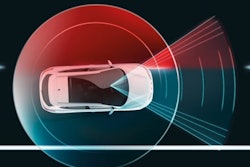Hummingbird Wings-Inspired Turbine
Forget about building a better mousetrap. In the 21st century, it’s all about building a better wind turbine. The latest is a flapping turbine designed by Tunisian company Tyer Wind, which employs dual oscillating blades that mimic the figure-8 motion of the wings of a hovering hummingbird—a design that allows conversion from a linear to a rotational motion.
Constructed of carbon fiber, the two vertical axis wings of the wind turbine are 5.25 feet in length for a total sweep area of 11.7 feet, which is less than the sweep area for typical three-blade horizontal-axis wind turbines we see today. That allows the turbine to be quitter, safer for migrating birds, less visually obtrusive and allows for more densely packed wind farm configurations while each turbine generates a rated power output of 1 kW.
The turbine is still under testing as Tyer Wind gathers data on the unit’s power efficiency, aerodynamic behavior, material resistance and stress over the mast, but the company has plans for a largescale version for use in either onshore or offshore applications.
SO, WHAT DO YOU THINK?
Do you think that a better-designed wind turbine will lead to greater renewable energy adoption? Tell us what you think the comments below.
A Different Kind Of 'Smart Glasses'
The term "smart glasses" generally refers to internet-connected eyewear that allows wearers to take videos with a tiny camera — or view images on a tiny screen — attached to their frames.
But a team of engineers from the University of Utah hopes to extend that expression to the lenses themselves.
Researchers detailed innovative new eyeglasses with lenses that encased liquid glycerin inside clear, flexible membranes.
The frames, meanwhile, are equipped with a distance meter, battery and three mechanical actuators that automatically detect distances to what the wearer is looking at — and curve the lenses to focus accordingly.
The refocusing process can take as little as 14 milliseconds and could eventually eliminate the need for reading glasses or bifocals.
In addition, the rechargeable battery could last for more than 24 hours per charge, and users could automatically input their prescription into a smartphone app that connects to the glasses.
In essence, you'd never need to buy another pair of glasses.
A bulky, rather unfashionable prototype was displayed at the recent Consumer Electronics Show in Las Vegas, but researchers say more practical frames could hit the market in as little as three years.
SO, WHAT DO YOU THINK?
Could self-adjusting vision technology have a future in an industrial capacity? Let us know what you think in the comments below.






















